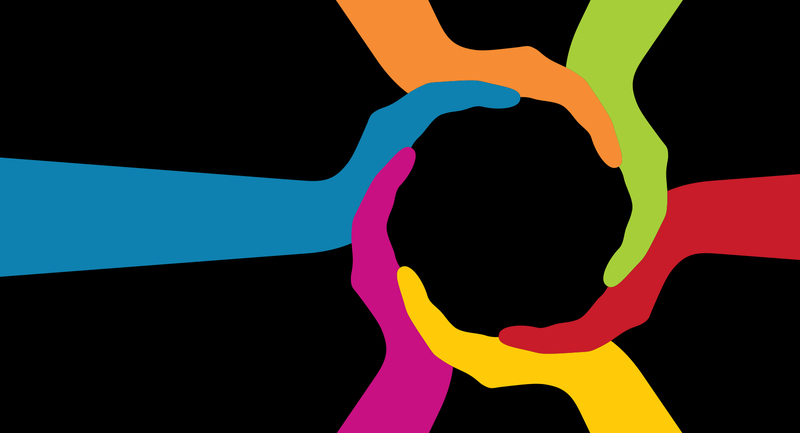ASCD recently joined the Partnership for 21st Century Skills to add its voice to the discussion about preparing youth for future success in work and adult life.
Earlier this year, as ASCD leaders were discussing new ways to promote the organization's mission and spread the word about the ASCD Whole Child Initiative, they decided it was time to connect with other education-based organizations. In March, the Association joined the Partnership for 21st Century Skills (the Partnership). This affiliation is one of more than 30 partnerships that ASCD has formed to support the Whole Child Initiative.
"ASCD is proud to join the national Partnership for 21st Century Skills in changing the conversation about learning, teaching, and leadership—so that we focus on educating the whole child and ensure our children are prepared for success in the increasingly interdependent global society and workforce of the 21st century," says ASCD Executive Director Gene Carter.
After identifying and defining the 21st century skills today's graduates need (see page 4), the Partnership began collaborating with educators, businesses, and community and government leaders to inject those skills into K–12 education. Some of its work involves requesting educators and administrators to add 21st century skills into their curricula, encouraging policymakers to adopt state standards that incorporate 21st century tools and skills, and working with business and community leaders to partner with school districts to prepare students for tomorrow's workplace.
Great Minds Think Alike
ASCD and the Partnership already intersect in their thinking on various issues, which helped the collaboration get off the ground quickly. In fact, one of ASCD's goals is redefining education for the 21st century. "It obviously is about more than test scores," says Kathy Welling, ASCD director of alliances and partnerships.
"Unfortunately, we have lost sight of the things that are really important for children to be able to do and to be. For all kids to be healthy, safe, engaged, supported, and challenged, we need the entire community to step up."
"I believe there's a lot of synergy between the Partnership and the Whole Child Initiative," says John Box, chairman of the Partnership and a longtime ASCD member. "It's really exciting for us to work together." Box, along with Ken Kay, president of the Partnership, looks forward to seeing how the Whole Child Initiative and the 21st century skills movement can both be pushed forward through this unique collaboration.
Sharing Resources
Another benefit of the collaboration is the opportunity it provides for the Association to connect with influential members of the Partnership. "We've never sat at a table with corporate entities such as Apple, Ford, Oracle, Verizon, and Dell," says Welling. "Now we will get to do that, and they will get to hear another voice—the voice of ASCD. That is very exciting." ASCD will provide insight to the innovators of business about what works in education. "We bring a different voice to the conversation," says Welling. "We're about improving instruction, teaching, learning, and leading."
As a leader in the field of professional development, ASCD will assist the Partnership in bolstering its efforts in this area. As an advocacy organization, the Partnership has spent most of its time since its inception in 2005 working with state-level administrators to bring 21st century skills into the curriculum. Nine states—Iowa, Kansas, Maine, Massachusetts, New Jersey, North Carolina, South Dakota, West Virginia, and Wisconsin—have joined the Partnership's state-leadership initiative. The Partnership is moving from advocating for statewide participation to training educators in these states to teach 21st century skills.
According to Kay, state partner West Virginia is focusing almost 80 percent of its 21st century efforts on professional development. "We can't expect teachers to know how to teach and assess 21st century skills without learning how," he says. "Professional development is a central part of that, and ASCD has huge competencies in that area."
One of ASCD's immediate action steps is to develop and promote a 21st century skills framework from a professional development point of view, which aligns with ASCD's high school redesign work, explains Welling. "This is one of the most exciting things ASCD has done in its 65-year history. The potential is phenomenal."
Five key areas in ASCD's Whole Child Compact align with the Partnership's objectives:
HealthyASCD: A healthy environment—which includes nutritional menu items, recess, health classes, counseling opportunities, and intramural sports—promotes learning.The Partnership: Young people should be able to obtain, interpret, and understand basic health information and services.
SafeASCD: Schools must commit to ensuring physical and emotional safety and security for every child.The Partnership: In a 21st century learning environment, students and staff feel safe, trusted, and respected.
EngagedASCD: An engaged and connected student will demonstrate academic and other achievements.The Partnership: When students are taught such 21st century skills as innovation, collaboration, creativity, and critical thinking, they become active and engaged learners.
SupportedASCD: Students form positive relationships with caring adults to reinforce academic, social, civic, ethical, and emotional development.The Partnership: In a 21st century learning environment, the family, school, and community work together.
ChallengedASCD: Schools and communities collaborate to prepare students for academic and career success.The Partnership: Students are challenged by core subjects as well as 21st century themes. Through local businesses and the community, students have equitable access to learning opportunities and academic challenges.
The Framework for 21st Century Learning
Core subjects and 21st century themes: In addition to English, world languages, arts, math, economics, science, geography, history, and government/civics, this grouping also includes such subjects as global awareness, financial literacy (e.g., economic, business, and entrepreneurial literacy), civic literacy, and health literacy.
Learning and innovation skills: creativity, critical thinking, problem solving, communication, and collaboration.
Information, media, and technology skills: information literacy, media literacy, and information and communication technology (ICT) literacy.
Life and career skills: flexibility, adaptability, initiative, self-direction, social and cross-cultural skills, productivity, accountability, leadership, and responsibility.
For definitions of these skills and more, visit Route 21—an all-encompassing source of 21st century skills information, resources, and community tools—at www.21stcenturyskills.org/route21 .








